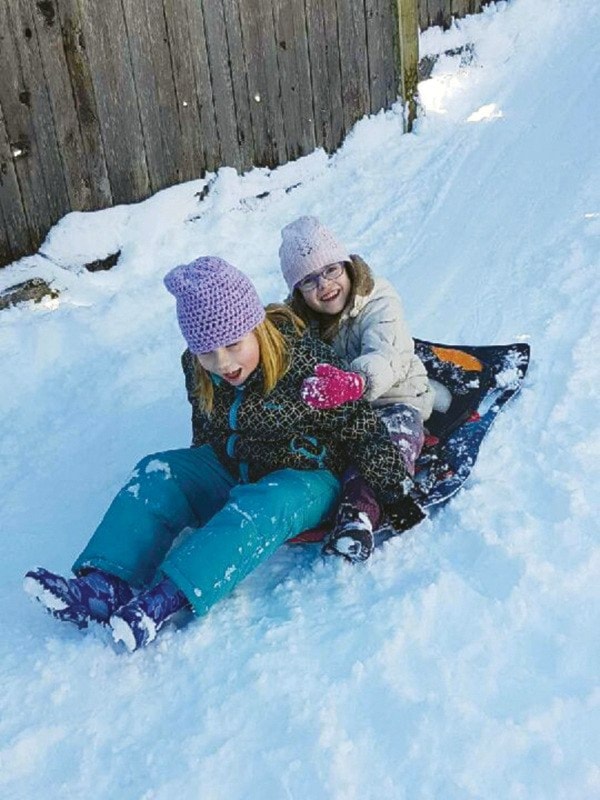Heavy snow and near blizzard conditions slammed southern Vancouver Island this week, causing problems for transportation, schools and, well, just about everyone.
The snowfall closed Saanich School District schools for the second day on Tuesday and left many parents scrambling for child care options. Schools were open on Wednesday despite another heavy dump of snow, although parents were being urged to pick up their children early from district schools as the snow accumulations and the threat of freezing rain combined with the snow made travel increasingly treacherous as the afternoon wore on.
Meanwhile, BC Transit cancelled 11 routes on Monday night and rerouted 18 other routes to avoid treacherous hills and streets. Some similar rerouting occurred on Wednesday.
Meanwhile, Saanich Public Works crews were called out to clear snow and do their best to make streets safer during the unusual weather conditions.
Police issued a warning to drivers, urging them to stay off the roads unless absolutely necessary on both Monday and Wednesday. Acting Sgt. Jereme Leslie of the Saanich Police said there were 11 collisions reported on Monday, a significant increase from the norm.
“When weather is like this, it’s just a good idea to stay off the roads if you can,” he said.
Camosun College closed both its Lansdowne and Interurban campuses Monday evening and again Wednesday afternoon, while the Saanich council meeting for Monday night was also cancelled due to the weather. UVic classes were also cancelled on Wednesday afternoon.
Armel Castellan, preparedness meteorologist with Environment Canada, confirmed that the weather event dumped a near record amount of snow on the Greater Victoria region.
“You actually have to go back to 1914 to get a greater single day snow event for Feb. 6, when 14 cm dropped on Victoria,” said Castellan. “I guess technically this is the second greatest single-day snow event we have for that date since records started being kept.”
But Castellan was quick to point out that Monday’s four centimetre snowfall should be considered as just one part of a series of unseasonable weather events for the region.
“We had 9.8 cm fall on the 3rd of February, 7.8 on the 4th, and 1 cm on the 5th,” he said. “Taken together this has been very unusual for this time of year.”
He also indicated that while some might dispute the four cm snow measurement for Monday, it’s important to realize that these measurements are done under specific controlled conditions. He said while it’s possible people have seen significantly deeper accumulations in their yards, for instance, those micro-climate conditions don’t necessarily give an accurate measurement of a snowfall event.
Castellan went on to refer to this winter’s weather as being anomalous as the temperatures have been some two to three degrees colder than normal due to some seriously cold ridges of air coming in from the northern continental air masses.
“The cold air comes into contact with the Pacific air flows and the precipitation events happen.”
Temperatures returned to normal on Thursday, with highs between 7 C and 10 C expected over the weekend and lows anticipated to remain above the freezing mark.
“That warm Pacific air mass is coming to Victoria, and I’m sure a lot of people are feeling that it can’t come too soon,” said Castellan. “It passed over Maui a few days ago and now we’re going to get the benefit of all that warm air.”
While the winter weather caused concern for many, the unusual snow accumulation provided entertainment for children across the region. Many children used the two-day break from school to take to the hills throughout Greater Victoria for a day of sledding in the sunshine.
